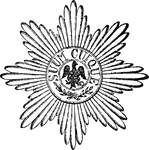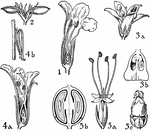
Orders of Acanthaceae, Myoporaceae, Phrymaceae, and Plantaginaceae
Pictured are flowers of the orders acanthaceae, myoporaceae, phrymaceae, and plantaginaceae. The flowers…
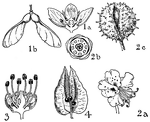
Orders of Aceraceae, Hippocastanaceae, and Sapindaceae
The orders of aceraceae, hippocastanaceae, and sapindaceae. The flowers of these orders that are illustrated…
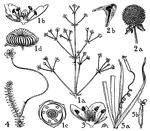
Alismaceae, Butomaceae, and Hydrocharitaceae Orders
Alismaceae is an order of herbaceous marsh plants with milky juice. Butomaceae is an order of aquatic…
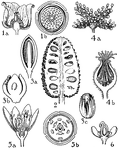
Annonaceae, Myristicaceae, Monimiaceae, and Lauraceae Orders
The orders of Annonaceae, Myristicaceae, Monimiaceae, and Lauraceae are pictured. The flowers of these…

Apatite
"A complex crystal of apatite with the faces of a third-order pyramid upon it." — Ford, 1912
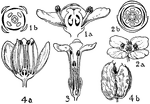
Orders of Aquifoliaceae, Celastraceae, Stackhousiaceae, and Staphyleaceae
The orders pictured are aquifoliaceae, celastraceae, stackhousiaceae, and staphyleaceae. The flowers…
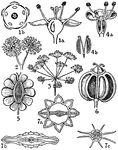
Orders of Araliaceae and Umbelliferae
Pictured are flowers of the orders araliaceae and umbelliferae. The flowers of these orders that are…
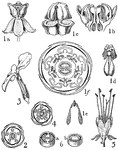
Orders of Asclepiadaceae, Convolvulaceae, Polemoniaceae, and Hydrophyllaceae
Pictured are flowers of the orders asclepiadaceae, convolvulaceae, polemoniaceae, and hydrophyllaceae.…
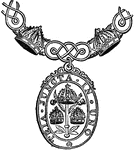
Badge, Order of Bath
"Order of the Bath, in heraldry, etc., an order of knighthood, so called because the recipients of the…
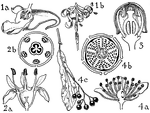
Orders of Balsaminaceae, Rhamnaceae, Vitaceae, and Tiliaceae
The orders pictured are balsaminaceae, rhamnaceae, vitaceae, and tiliaceae. The flowers of these orders…
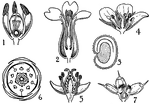
Bassellaceae and Caryophyllaceae Order
Pictured are the orders of Bassellaceae and Caryophyllaceae. The flower pictured belong to the Bassellaceae…

Three Bears and Chairs
Illustration of the three bears with three chairs that can be used to write mathematics story problems…

Children On A Bench
Illustration of children sitting on a bench and standing that can be used to write mathematics story…

Berberidaceae, Menispermaceae, Mahnoliaceae, and Calycanthaceae Orders
Shown are the orders of berberidaceae, menispermaceae, magnoliaceae, and calycanthaceae. The illustrated…
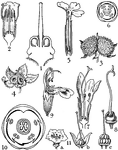
Orders of Boraginaceae, Verbenaceae, Labiatae, and Nolanaceae
Pictured are flowers of the order boraginaceae, verbenaceae, labiatae, and nolanaceae. The flowers of…
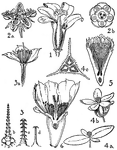
Orders of Caricaceae, Loasceae, Begoniaceae, and Cactaceae
Represented are the orders of caricaceae, loasaceae, begoniaceae, and cactaceae. The flowers of these…

Cease Firing
Order given to stop hostilities on the battlefield. Soldiers stop shooting their weapons when this signal…
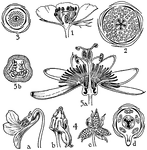
Orders of Cistaceae, Bixaceae, Violaceae, and Passifloraceae
Flowers of the orders of cistaceae, bixaceae, violaceae, and passifloraceae are pictured. These flowers…
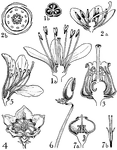
Orders of Clethraceae, Pyrolaceae, and Ericaceae
Pictured are the orders of clethraceae, pyrolaceae, and ericaceae. The flowers of these orders that…

Composite Order
A mised order, combining the volutes of the Ionic order with the leaves of the Corinthian order.
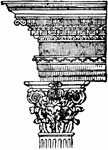
Corinthian Order
One of the three orders of classical architecture. It was said to have been invented by an architect,…
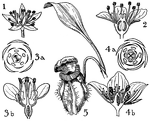
Orders of Crassulaceae, Saxifragaceae, and Cephalotaceae
Pictured are the orders of crassulaceae, saxifragaceae, and cephalotacea. The flowers of these orders…
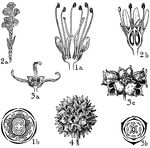
Orders of Cunoniaceae, Bruniaceae, and Hamamelidaceae
The orders of cunoniaceae, bruniaceae, and hamamelidaceae are pictured. The flowers of these orders…
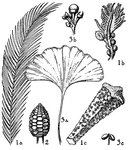
Cycadaceae and Ginkogoaceae
Cycadaceae is an order with more or less woody plants. The stems are thick, unbranched, columnar, or…
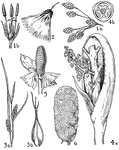
Cyperaceae, Palmaceae, and Cyclanthaceae Orders
Pictured from the cyperaceae orders are (1) scirpus, (1a) a portion of inflorescence, (1b) flower, (2)…

Dannebrog
"The cross of the Danisn order of the Dannebrog, a white cross surmounting a red one, with the royal…

Children Playing Darts
Illustration of children playing darts that can be used to write mathematics story problems involving…
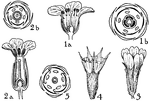
Orders of Diapensiaceae, Primulaceae, and Plumbaginaceae
Pictured are flowers of the orders diapensiaceae, primulaceae, and plumbaginaceae. The flowers of these…
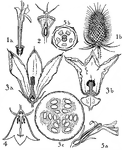
Orders of Dispsacaceae, Cucurbitaceae, and Campanulaceae
Pictured are flowers of the orders dipsacaceae, cucurbitaceae, and campanulaceae. The flowers illustrated…

Doric Order
One of the three orders or organizational systems of Ancient Greek or classical architecture.

Double Time
Marching at twice the cadence of "Forward March;" 100 to 180 steps per min. something of a light jog.…
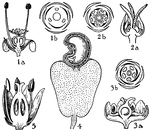
Orders of Empetraceae, Coriariaceae, Anacaridaceae, and Cyrillaceae
The orders pictured are empetraceae, coriariaceae, anacaridaceae, and cyrillaceae. The flowers of these…
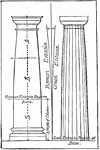
Entasis
"In architecture, the swelling or outward curve of the profile of the shaft of a column. Entasis. e…

Orders of Erythroxylaceae, Zygophyllaceae, and Rutaceae
Pictured are the orders of erythroxylaceae, zygophyllaceae, and rutaceae. The flowers of these orders…

Eyes right
At the command right, turn the head to the right oblique, eyes fixed on the line of eyes of the men…
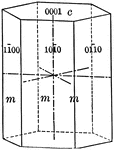
Prism of the first order
"This is a form consisting of six rectangular vertical faces each of which intersects two of the horizontal…

Fix Bayonet
Order give to soldiers instructing them to attach their bayonets to the end of their rifles.
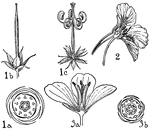
Orders of Geraniaceae, Tropaeolaceae, and Linaceae
Pictured are the orders of geraniacea, tropaeolaceae, and linaceae. The flowers of these orders that…
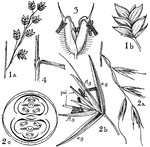
Gramineae Order
Gramineae order consists of the grass family. Pictured are (1a) a part of a grass panicle, (1b) spikelet,…

Hexagonal Prism of the First Order
"Hexagonal prism of the first order, consisting of six faces also parallel to the hexad axis, but perpendicular…
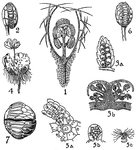
Hymenophyllaceae, Cyatheaceae, and Polypodiaceae
The hymenophyllaceae order consists of very delicate ferns. The cyatheaceae order usually consists of…
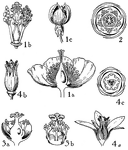
Orders of Hypericaceae, Guttiferae, and Tamaricaceae
The orders of hypericacea, guttiferae, and tamaricaceae are pictured. The flowers of these orders that…
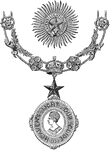
Insignia of the Order of the Star of India
"This Order was instituted by Her Majesty the Queen, in the year 1861, for bestowing honor upon the…

Ionic Order
One of the three orders of classical architecture. It originated in the mid-6th century BC.
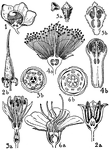
Orders of Lecythidaceae, Rhizophoraceae, Combretaceae, Myrtaceae, and Melastomaceae
Pictured are the orders of Lecythidaceae, Rhizophoraceae, Combretaceae, Myrtaceae, and Melastomaceae.…

Second Kind of Lever
"In the second order of levers, the resistance is between the fulcrum and the power; and, as before,…
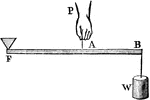
Third Kind of Lever
"In the third order of lever the power acts between the prop and the resistance, where also P : W ::…
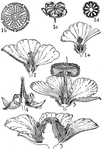
Orders of Malvaceae, Bombacaceae, and Dilleniaceae
The orders pictured are malvaceae, bombacaceae, and dilleniaceae. The flowers of these orders that are…
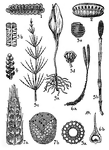
Marattiaceae and Ophioglossaceae
The order marattiaceae, and the maratiia family, consists of stately tropical ferns with thickened,…



